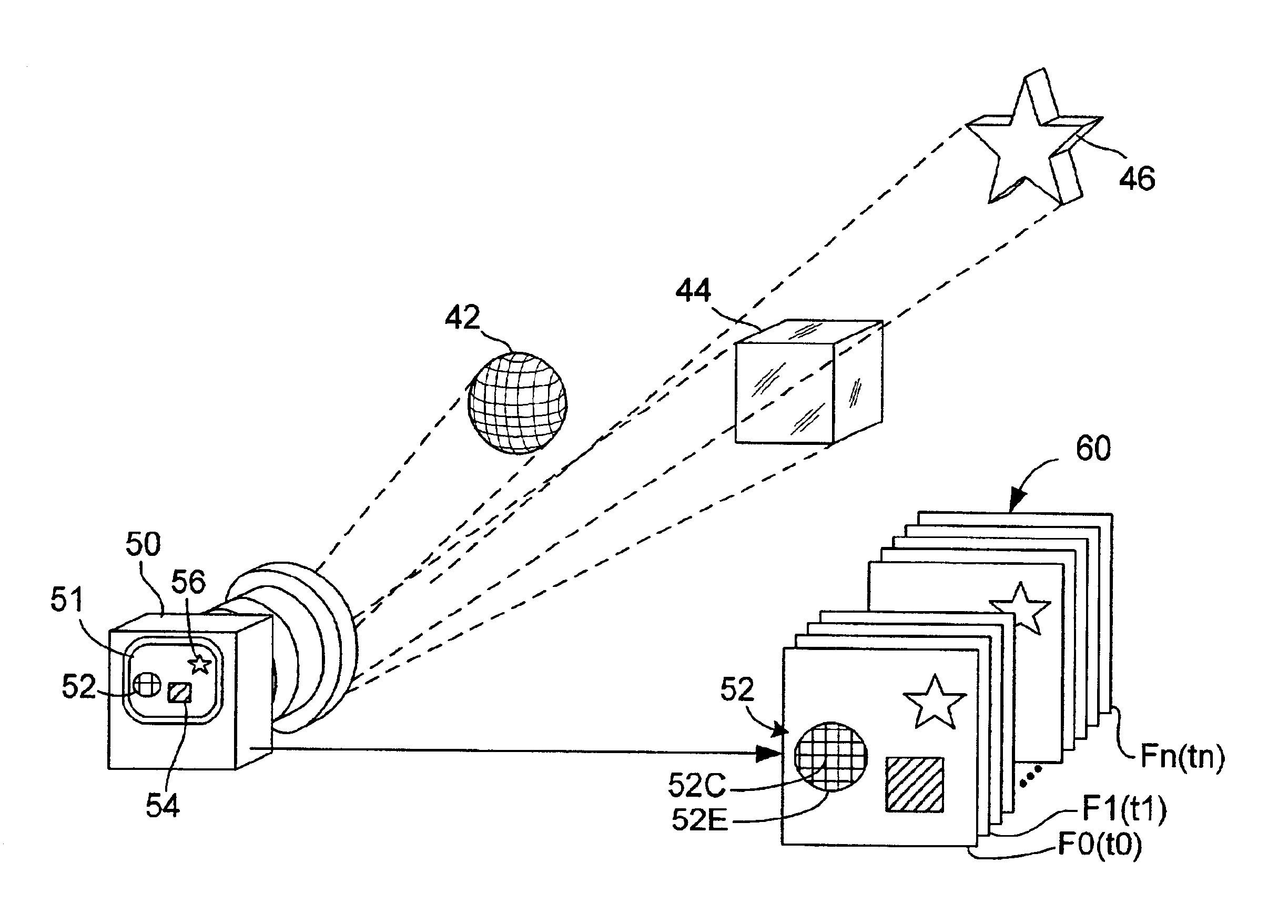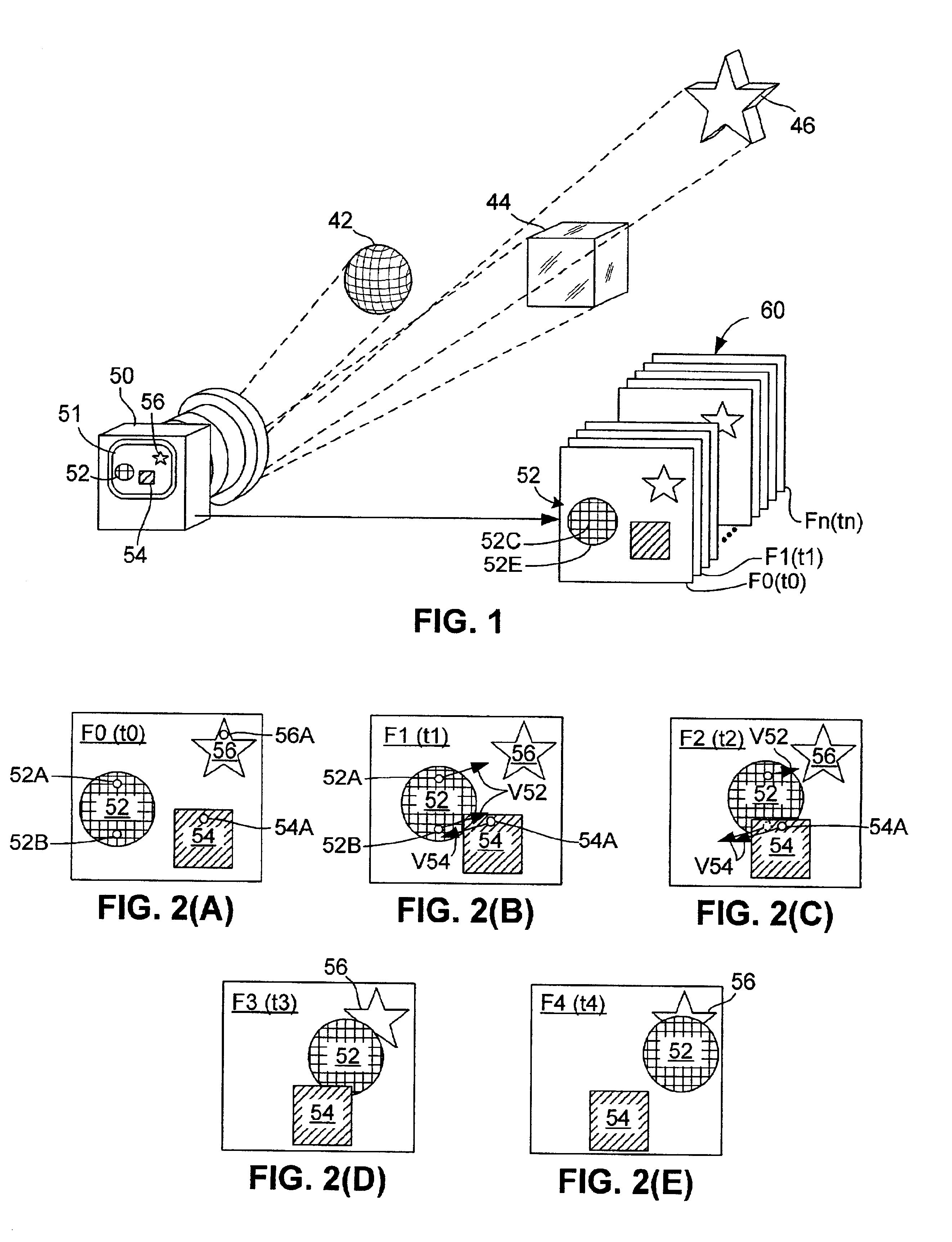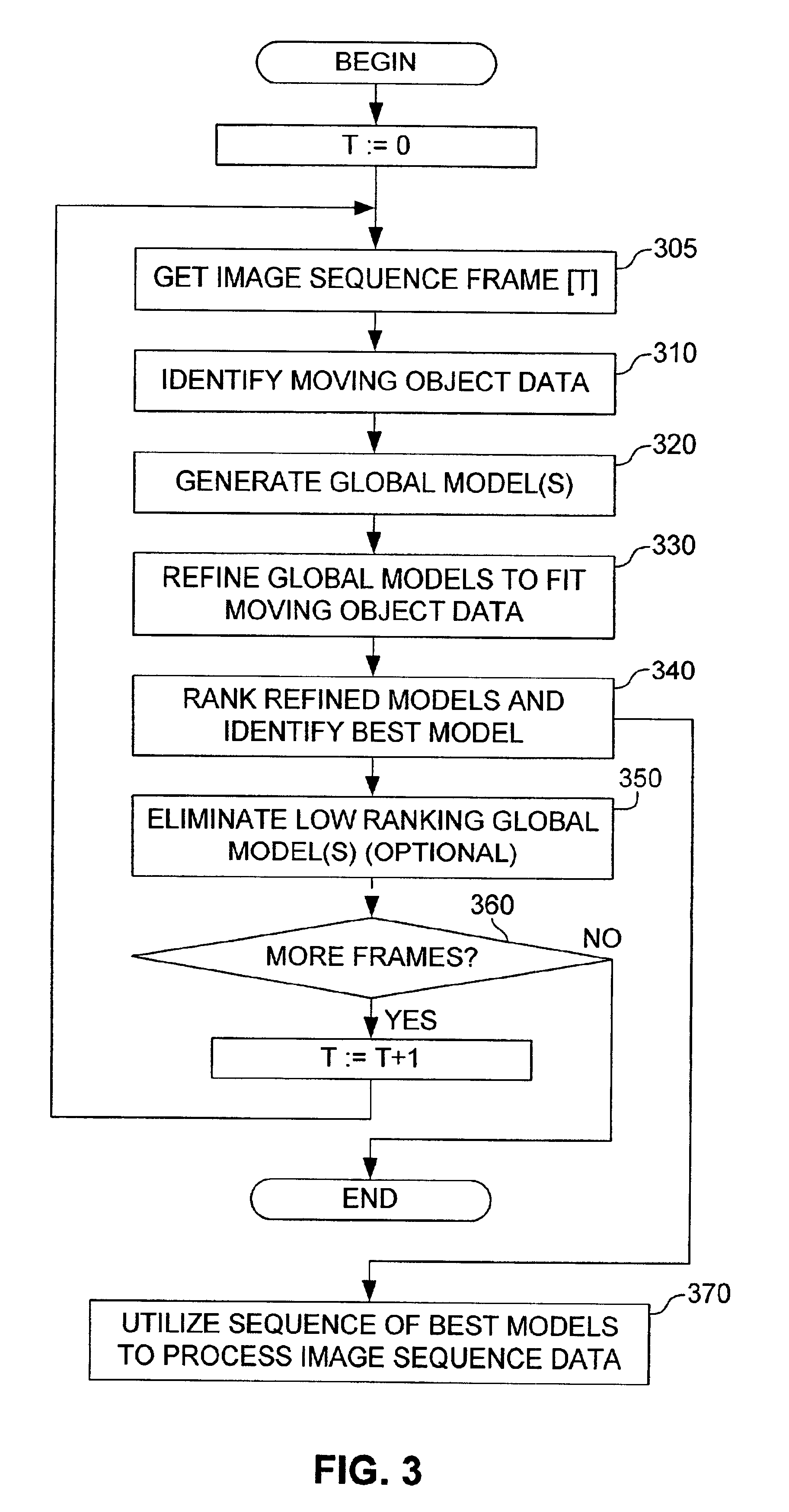Visual motion analysis method for detecting arbitrary numbers of moving objects in image sequences
a technology of visual motion analysis and image sequence, which is applied in the field of processor-based visual motion analysis techniques, can solve the problems of image blur, difficult to determine the exact position of the object's boundary (edge), and difficulty in determining image blur, and achieve the effect of facilitating the analysis of multiple alternative models
- Summary
- Abstract
- Description
- Claims
- Application Information
AI Technical Summary
Benefits of technology
Problems solved by technology
Method used
Image
Examples
Embodiment Construction
[0034]The present invention is directed to a visual motion analysis method in which a layered motion model framework is generated and updated by a computer or workstation, and is defined by parameters that are stored in one or more memory devices that are readable by the computer / workstation. The visual motion analysis method is described below in conjunction with a tracking function to illustrate how the beneficial features of the present invention facilitate motion-based tracking or surveillance of an arbitrary number of moving objects during “real world” events. However, although described in the context of a tracking system for “real world” events, the visual motion analysis method of the present invention is not limited to this function, and may be utilized for other purposes. For example, the visual motion analysis method can also be utilized to perform image editing (e.g., remove or replace one or more moving objects from an image sequence), or to perform object recognition. ...
PUM
 Login to View More
Login to View More Abstract
Description
Claims
Application Information
 Login to View More
Login to View More - R&D
- Intellectual Property
- Life Sciences
- Materials
- Tech Scout
- Unparalleled Data Quality
- Higher Quality Content
- 60% Fewer Hallucinations
Browse by: Latest US Patents, China's latest patents, Technical Efficacy Thesaurus, Application Domain, Technology Topic, Popular Technical Reports.
© 2025 PatSnap. All rights reserved.Legal|Privacy policy|Modern Slavery Act Transparency Statement|Sitemap|About US| Contact US: help@patsnap.com



